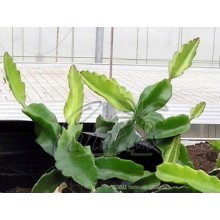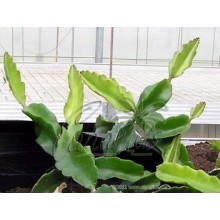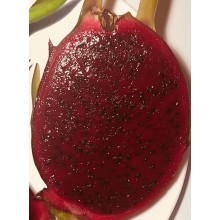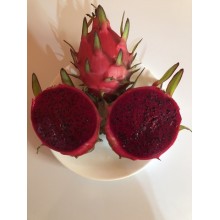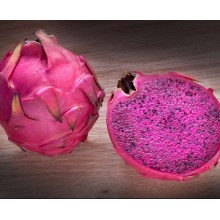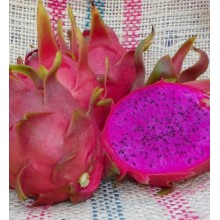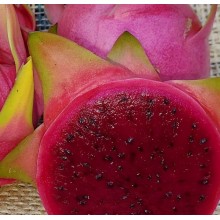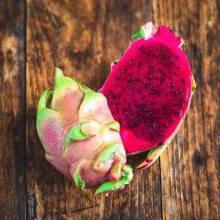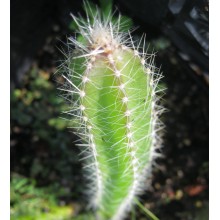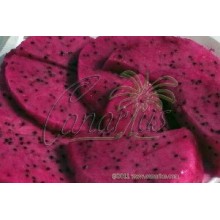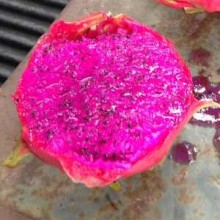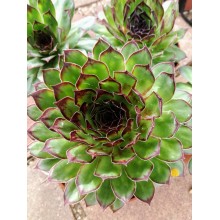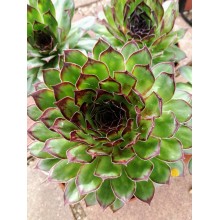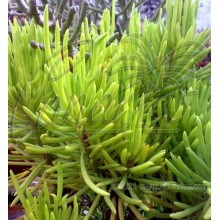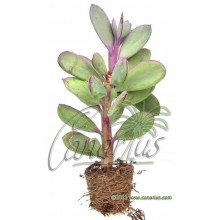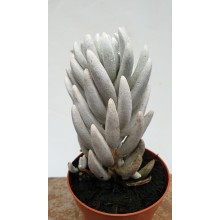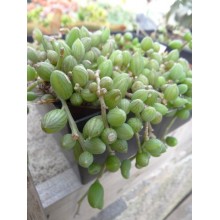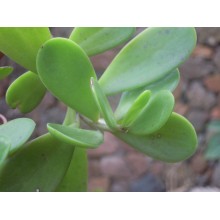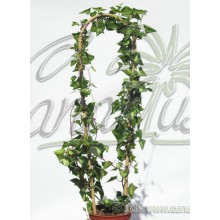Plantas generales Hay 1882 productos.

Si te gustan las plantas exóticas, acabas de llegar al lugar correcto. Canarius ofrece plantas exóticas difíciles de conseguir, que raramente se encuentran en tiendas de jardinería. Nuestra tienda tiene especies naturales, así como híbridos poco frecuentes. Ofrecemos plantas exóticas procedentes de las Islas Canarias.
Los pedidos se envían a cualquier lugar de Europa y también a todo el mundo. Los paquetes llegarán a su casa en pocos días después de ser enviados (tenga en cuenta que también necesitamos algunos días para el procesamiento). No dude en contactar con nosotros si tiene alguna pregunta.
Subcategorías
-
Suculentas
Los desiertos y las áreas secas son el hogar de las plantas más interesantes. Canarius ofrece una selección creciente de plantas suculentas de la máxima calidad, ya que han sido cultivadas al aire libre, bajo el pleno sol de las Islas Canarias.
Las suculentas o "plantas crasas" son especies que retienen agua, que están adaptadas a las condiciones de sequía. Estas plantas almacenan succum (jugo, agua) en sus hojas, tallos o raíces, y con frecuencia muestran un aspecto grueso y carnoso.
-
Exóticas
Las plantas exóticas son especies originarias de otras partes del mundo y que normalmente, tienen un carácter ornamental, una vegetación exuberante, con flores coloridas, formas inusuales... Aquí puede encontrar una gran variedad de plantas exóticas: desde bromelias y heliconias, hasta palmeras y plantas de interior.
Las plantas exóticas no tienen un uso específico. Los coleccionistas compran este tipo de plantas por su rareza, para decoración interior o exterior, en función de sus características. -
Frutales y Medicinales
Los árboles frutales, las hierbas y las plantas medicinales nos permiten mejorar nuestra salud y alimentación. En esta sección, cada tipo de planta tiene efectos saludables, tanto los frutales (Feijoa, piña, Fina de Jete...), como plantas para la salud, como Graviola, Aloe vera, Callisia fragrans...
En el metabolismo normal de todos seres vivos, el organismo produce algunas sustancias a partir de los nutrientes presentes en el entorno; algunos de estos químicos son parte del proceso en todo (o casi todo) tipo de especies. Normalmente, los componentes útiles están concentrados en algunas de sus partes: hojas, semillas, flores...
¡Encuentre su planta saludable y cómprela online!
-
Especiales
En canarius.com tratamos de ir más allá de los límites en el campo de la botánica. En nuestra tienda en línea tratamos de facilitar la compra de plantas de cualquier parte del mundo. Por eso, cultivamos desde las especies más comunes hasta las plantas más especiales, como podrá ver en esta sección.
-
Selenicereus 'Hybridum' - Pitahaya
Selenicereus 'Hybridum' - Pitahaya
One of the best selection, imported from Reunion island. It bears round fruits with red flesh.
21,70 € -
Selenicereus 'JC03' - Pitahaya
Selenicereus 'JC03' - Pitahaya
Rooted cutting of 20-25 cm. A good pollinator Hylocereus used by cultivators of Reunión Island for H. undatus, H. purpusii e H. hybrids. The taste of the fruits is not the best but it is still nice to eat.
23,00 € -
Selenicereus 'JC05' - Pitahaya
Selenicereus 'JC05' - Pitahaya
We offer a rooted cutting of 20-25 cm
21,70 € -
Selenicereus 'Sin Espinas'
Selenicereus 'Sin Espinas'
This thornless variety comes from the genus Hylocereus and an unknown species native to Nicaragua. The fruits average size is a pound with thick pink skin with green fins and it has deep red flesh. The most interesting aspect of this variety is its lack of spins.Rooted cutting of 20-25 cm.
21,70 € -
Selenicereus costaricensis - Costa Rican Dragon Fruit
Selenicereus costaricensis - Costa Rican Dragon Fruit
Wild dragonfruit with red, sweet and tasty fruits. It grows wild in central america in dry forests. This is the ancestor of many modern hybrids and to many conoisseurs it is still the tastiest, and the "real thing". Its fruits are all-red, especially rich in healthy indicaxanthin anti-oxidants.
28,50 € -
Selenicereus purpusii - Pitahaya, Purple Dragon Fruit
Selenicereus purpusii - Pitahaya, Purple Dragon Fruit
20-25 cm Rooted cutting. A climbing cactus with excellent fruits, with purple skin and flesh. It is a very good pollinator for the other ones. It needs a pollinator, and the best is H. undatus. VISIT OUR SECTION OF FRUIT TREES A-Z AND FIND MANY MORE HYLOCEREUS
21,70 € -
Selenicereus undatus 'Condor'
Selenicereus undatus 'Condor'
"Self-pollinating" cultivar with large oval shaped fruit up to 700g in weight, with a skin which is at first light green with pinkish shades which darken to pinkish red as the fruit ripens. The flesh is dark purple colour with many small dark edible seeds. The taste of this variety is described as very peculiar and pleasant to the palate.
21,70 € -
Sempervivum calcareus
Sempervivum calcareus
Native to Southern Eruope from about 200 to 2800 m, it has neat stolinferous rosettes with a red hue, and ciliate ("Hairy") leaf margins. It naturally grows in rocky outcrops and cliffs, but it became well known in ancient times since it was typically found on roofs, hence the name "tectorum", meaning "of the roofs"
10,70 € -
Sempervivum tectorum
Sempervivum tectorum
Native to Southern Eruope from about 200 to 2800 m, it has neat stolinferous rosettes with a red hue, and ciliate ("Hairy") leaf margins. It naturally grows in rocky outcrops and cliffs, but it became well known in ancient times since it was typically found on roofs, hence the name "tectorum", meaning "of the roofs"
10,70 € -
Senecio barbertonicus
Senecio barbertonicus
Small shrub, Bright green succulent leaves held upright and are crowded toward tips. Orange yellow clusters of flowers appear in late autumn. It is probably the largest species in the group of senecios with cylindrical leaves...
10,80 € -
Senecio crassissimus
Senecio crassissimus
Cont.= 8,5 cm - This species from Madagascar grows as a low shrub. Multiple stems have flattened obovate leaves, glaucous gray with purple margin in strong light. Yellow flowers. Suitable for pots or frost-free gardens.
10,70 € -
Senecio haworthii 'Mont Blanc'
Senecio haworthii 'Mont Blanc'
This all-white wooly Senecio is native to the Little Karroo of South Africa. It is easy to grow and makes a nice small shrub with vertical branches. Senecio haworthii is renown for its cold hardiness as it takes short frosts to -6 C. 'Mont Blanc' is a select clone which is a stouter and whiter than the typical species.
10,20 € -
Senecio jacobsenii
Senecio jacobsenii
Creeping Senecio from E Africa with glossy leaves. It can be used in baskets or as a ground cover. It is called in English Trailing Jade Plant.
10,40 € -
Senecio macroglossus variegata
Senecio macroglossus variegata
NEW! - Cont.= 8,5 cm - This climbing plant is called Flowering Ivy, because its leaves and habit looks like an ivy but it bear daisy-like flowers. It is native to the Eastern coast of South Africa and it is frost sensitive.
10,80 €
En estos momentos tenemos pocos productos en esta categoría Plantas generales




















